Mutually Exclusive Math - Learn what mutually exclusive events are in probability theory, how to find them, and how to calculate their probabilities. E \(\cap\) f = \(\varnothing\). Two events e and f are said to be mutually exclusive if they do not intersect:
Two events e and f are said to be mutually exclusive if they do not intersect: Learn what mutually exclusive events are in probability theory, how to find them, and how to calculate their probabilities. E \(\cap\) f = \(\varnothing\).
Two events e and f are said to be mutually exclusive if they do not intersect: Learn what mutually exclusive events are in probability theory, how to find them, and how to calculate their probabilities. E \(\cap\) f = \(\varnothing\).
Mutually Exclusive Events GCSE Maths Steps & Examples
E \(\cap\) f = \(\varnothing\). Two events e and f are said to be mutually exclusive if they do not intersect: Learn what mutually exclusive events are in probability theory, how to find them, and how to calculate their probabilities.
Mathematics 10 Q3 Mod30 Probability Of Mutually Exclusive And Not
E \(\cap\) f = \(\varnothing\). Learn what mutually exclusive events are in probability theory, how to find them, and how to calculate their probabilities. Two events e and f are said to be mutually exclusive if they do not intersect:
Grade 12 Applied Math (pilot curriculum) Mutually Exclusive/Mutually
Learn what mutually exclusive events are in probability theory, how to find them, and how to calculate their probabilities. E \(\cap\) f = \(\varnothing\). Two events e and f are said to be mutually exclusive if they do not intersect:
PPT Addition Rule PowerPoint Presentation, free download ID3087295
Learn what mutually exclusive events are in probability theory, how to find them, and how to calculate their probabilities. E \(\cap\) f = \(\varnothing\). Two events e and f are said to be mutually exclusive if they do not intersect:
Mutually Exclusive Probability Definition
Learn what mutually exclusive events are in probability theory, how to find them, and how to calculate their probabilities. E \(\cap\) f = \(\varnothing\). Two events e and f are said to be mutually exclusive if they do not intersect:
Mutually Exclusive Events GCSE Maths Steps & Examples
Learn what mutually exclusive events are in probability theory, how to find them, and how to calculate their probabilities. Two events e and f are said to be mutually exclusive if they do not intersect: E \(\cap\) f = \(\varnothing\).
MECE Principle The Ultimate Guide to MECE Frameworks (2023)
Learn what mutually exclusive events are in probability theory, how to find them, and how to calculate their probabilities. Two events e and f are said to be mutually exclusive if they do not intersect: E \(\cap\) f = \(\varnothing\).
Probability of Mutually Exclusive Events (Simplifying Math) YouTube
E \(\cap\) f = \(\varnothing\). Learn what mutually exclusive events are in probability theory, how to find them, and how to calculate their probabilities. Two events e and f are said to be mutually exclusive if they do not intersect:
Probability of Mutually Exclusive Events With Venn Diagrams YouTube
Learn what mutually exclusive events are in probability theory, how to find them, and how to calculate their probabilities. E \(\cap\) f = \(\varnothing\). Two events e and f are said to be mutually exclusive if they do not intersect:
Two Events E And F Are Said To Be Mutually Exclusive If They Do Not Intersect:
Learn what mutually exclusive events are in probability theory, how to find them, and how to calculate their probabilities. E \(\cap\) f = \(\varnothing\).
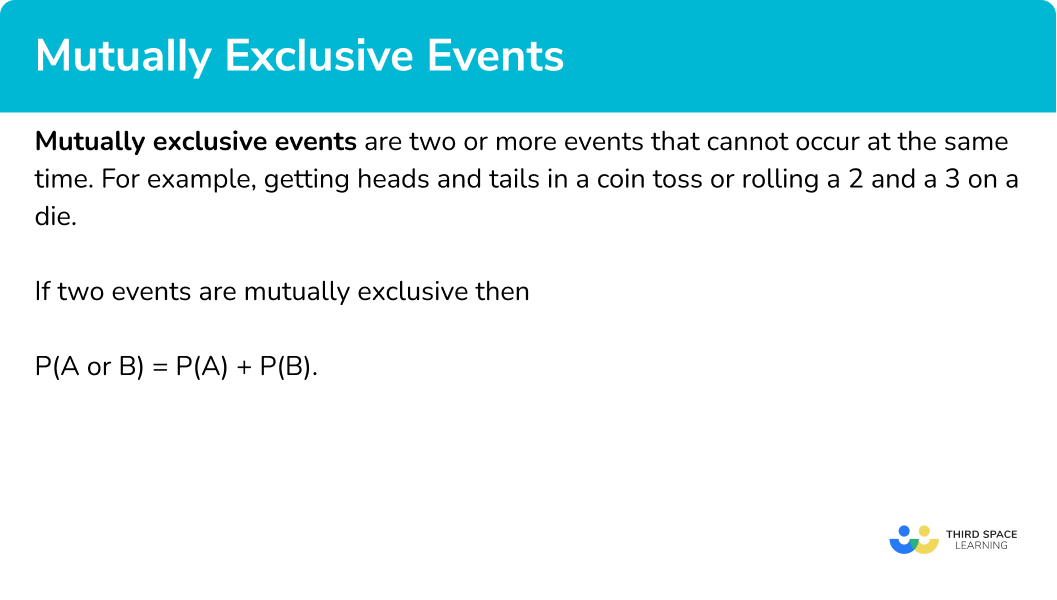
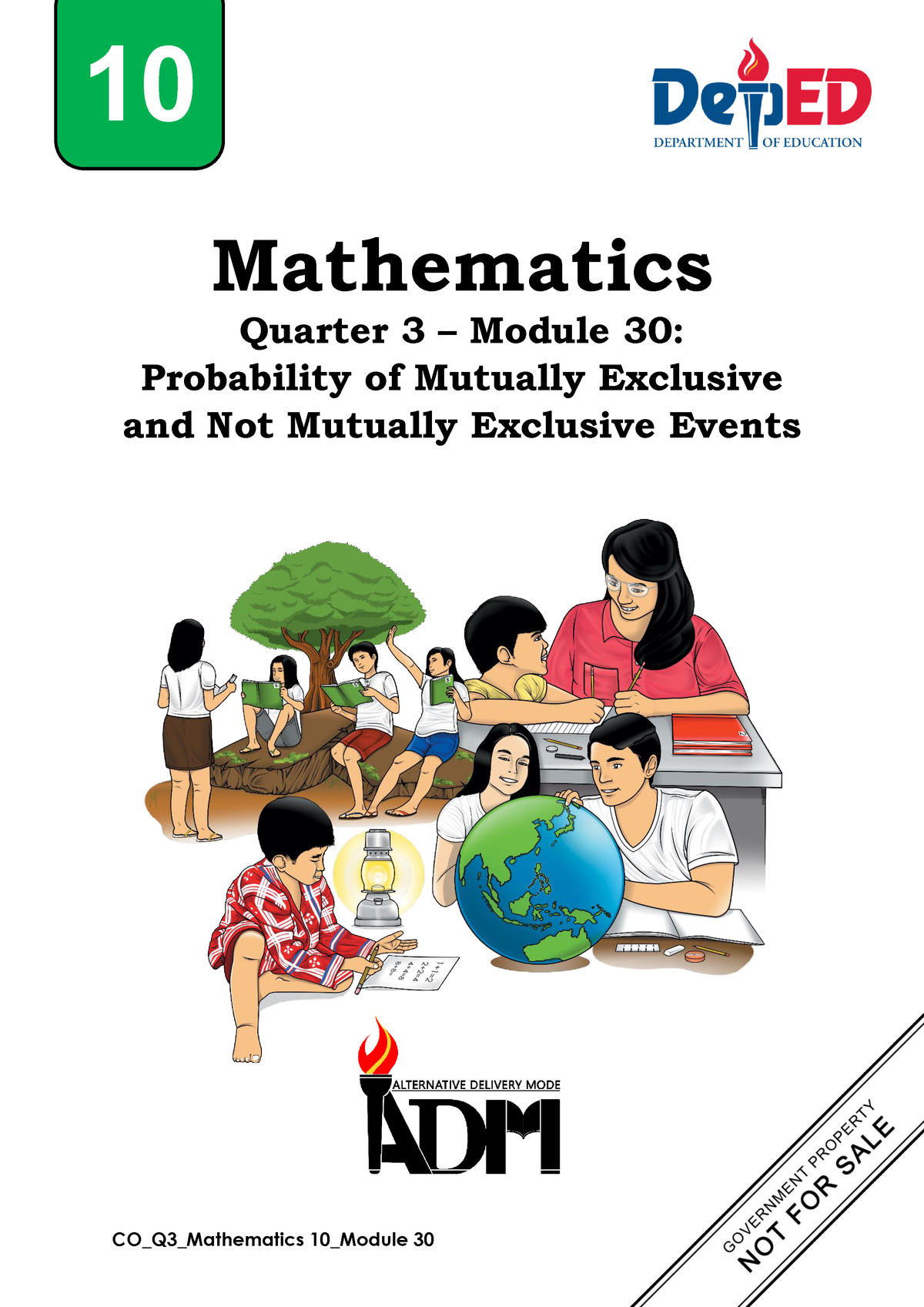
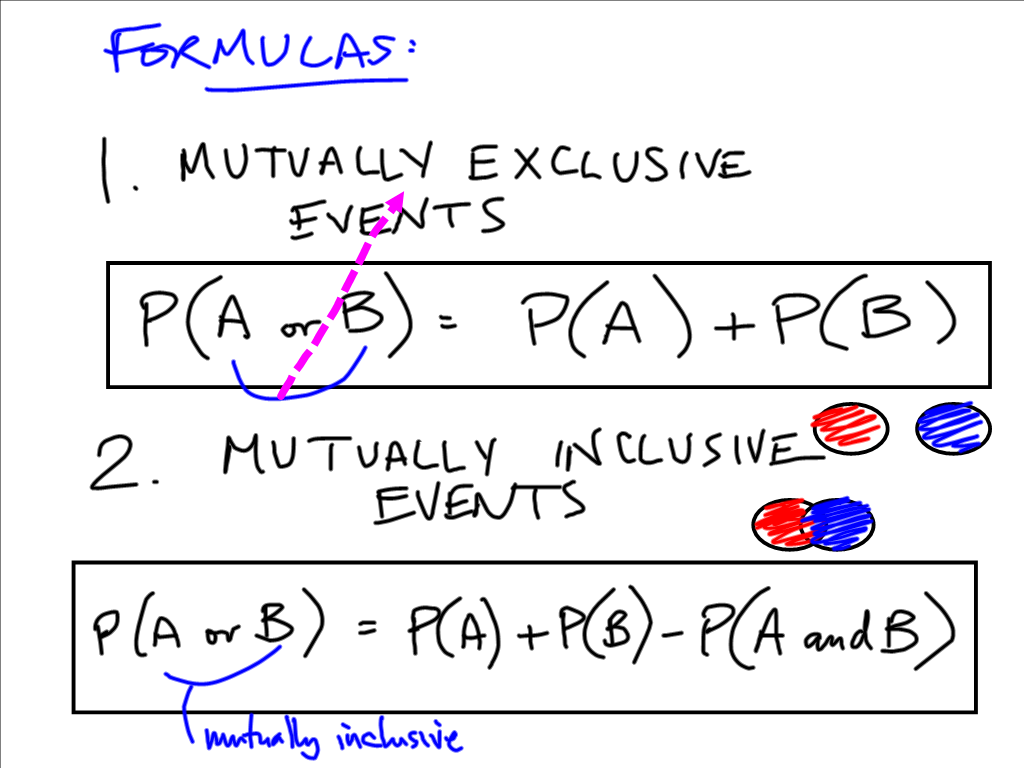
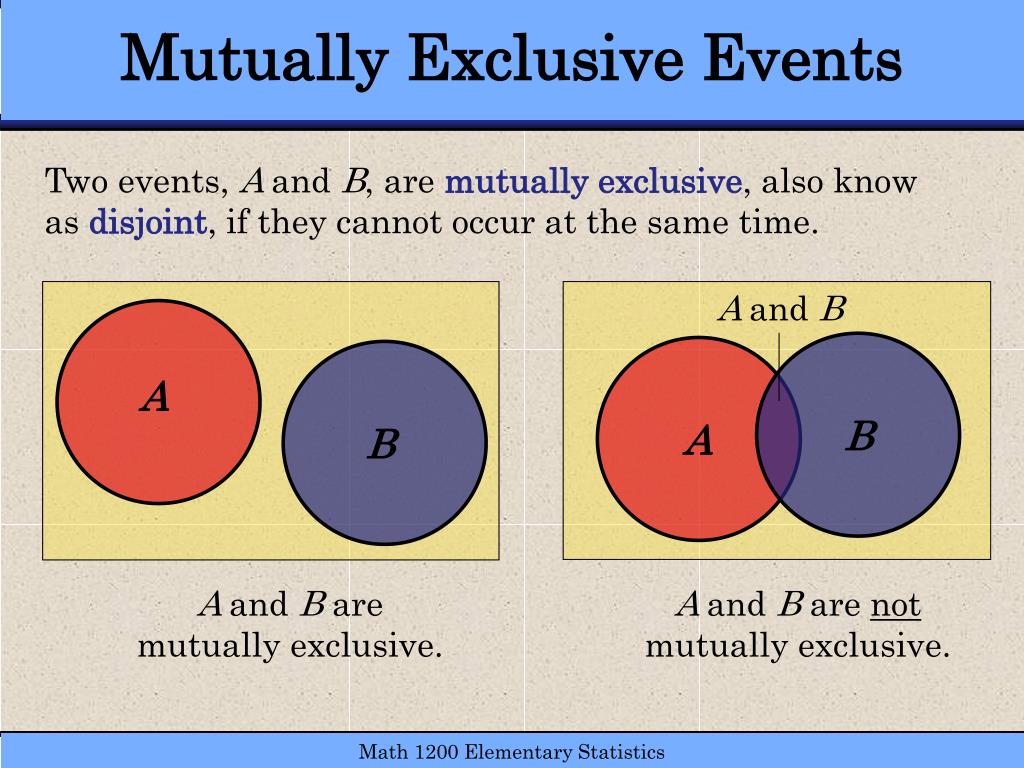
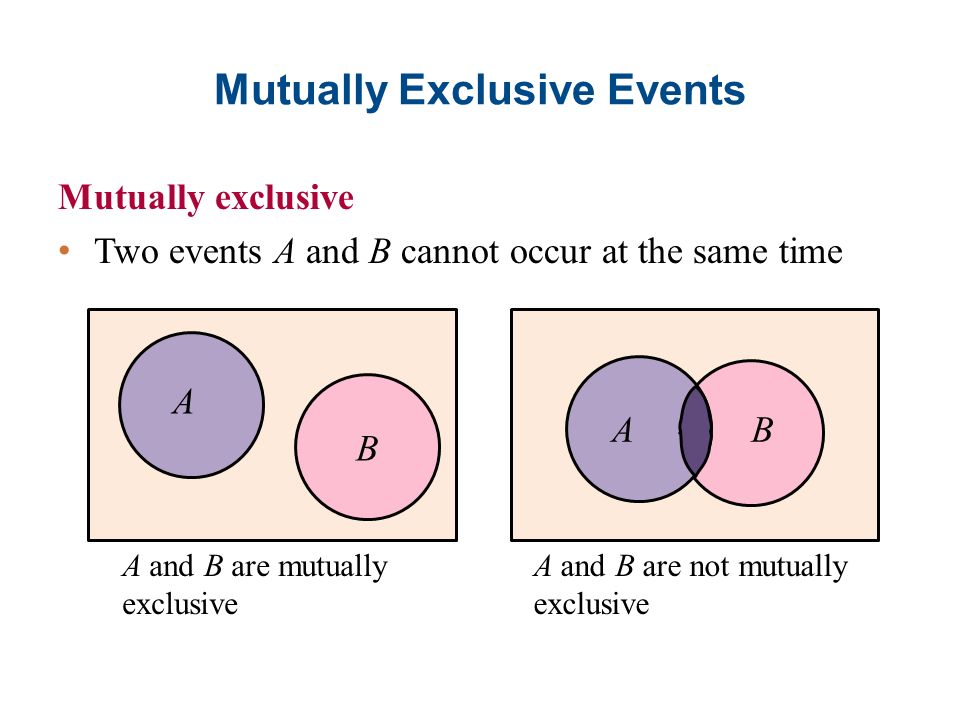




/mutually-56b749655f9b5829f8380e1f.jpg)